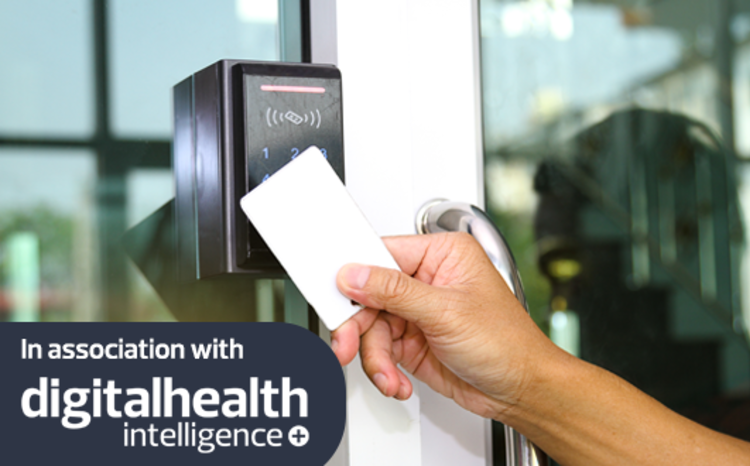John Parry: Working towards a national consent model
- 21 October 2016

The benefits of sharing patient information are now well documented, endorsed and understood. Yet, at times, the motivations for doing this can still seem misaligned.
Information sharing comes up in the context of creating a ‘paperless’ NHS, encouraging GPs to form federated practices, better commissioning, the vertical integration of health and care providers to progress the Five Year Forward View, patient empowerment, and wealth creation within the NHS.
All these different contexts create uncertainty and cast doubt over whether the NHS as a whole – as a multifaceted health body – has the appropriate information governance in place. These uncertainties can hide any good practice and put obstacles in the way of finding a clear way forward.
Local sharing agreements
When it comes to sharing information across healthcare services, the big imperatives to date include setting up integrated care teams to deliver care closer to home and providing better information for clinicians seeing unfamiliar patients, particularly out of hours.
Making sure that the data controllers of the information in these projects are protected from the risk created by inadequate data security is central to the current solution being put forward (by NHS Digital) through the GP Systems of Choice channel.
The drive to encourage sharing by adopting a consent to view only approach (that is, an implied share-out and explicit share-in consent) has led to the concept of local sharing agreements or LSAs, which data controllers believe will give them the necessary protection.
The LSAs will make sure that there is a common, area-specific approach to IG, security and supervision across the organisations that sign up to the agreement, and that defined list will provide support for principle 7 of the Data Protection Act.
This is the principle that deals with information security, and which says appropriate technical and organisational measures must be taken against the unauthorised or unlawful processing of personal data and accidental destruction, loss or damage to it.
What about the patient?
At first glance, this seems a comfortable solution, minimising risk to data controllers whilst providing a model supportive of local care.
However, by doing this aren’t we putting data controllers’ risk ahead of patient care? Many would agree that the patient should be put first when it comes to any decision regarding their care.
Adopting this point of view suggests that while a localised solution protects data controllers from misconduct, it does not accommodate scenarios in which patients access care outside of their defined locality.
Accidents and illness away from home, the choice to undergo surgery or recovery in an alternative area, university students requiring urgent care during term time are just a few examples of occasions in which patient care could be compromised due to the limitations of LSAs.
For many community and unscheduled care providers the scale would be substantial. When this issue has been raised, some have argued that the best way forward will be to build on local arrangements so that sharing spans the whole health service. Unfortunately, there is no deadline or incentive to suggest this will be achieved.
Trusted, or not?
Local sharing between defined organisations also raises another important question: is the NHS a trusted organisation or is it not?
By resorting to a local model, we ignore the real challenge outlined by Dame Fiona Caldicott – resolving the governance and security issues behind current distrust of data sharing initiatives.
In her latest report ‘Review of Data Security, Consent and Opt-outs’ (commonly titled ‘Caldicott 3’), she raises issues about the adequacy of NHS cyber-security, and the possible perfunctory use of IGSoC, highlighting the need for excellence in both to secure confidence.
Ensuring that the patient is aware, informed and consulted when personal data is being shared is sensible and required. IT-based data sharing increases control, allows for dissent, complete audit, and when necessary, for alerting of misuse. The SystmOne enhanced data sharing model, or eDSM is based upon these principles.
For many SystmOne users, sharing the detailed electronic health record is an established way of working. Coded data aside, the benefits of a shared narrative between GP, community nurse, palliative care teams, GP out-of-hours service, A&E department, hospital services and social care are self-evident.
The CQC is forthright in its support for data sharing where the patient expects it and will benefit from it, balancing this over the security concern.
Think bigger
For direct patient care we need a common, scalable sharing model that serves the citizen appropriately. Most patients think we (the NHS) share information already, most will agree to data sharing if asked and inherently expect that their record will be available wherever they want it to be.
The key, for me, is that there should be an implied consent to share out model across the whole of the NHS and social care. That is; enable the detailed care record at an organisation to be ready to view elsewhere.
When the patient is asked if their information can be viewed, if they say “yes” the information will be available to the user. Any patient that does not want this to happen may dissent.
By implementing and scaling the necessary controls, including IGSoC and, most importantly, consent to view at the point of care, health and social care organisations can provide a service that is informed, responsive, and that ultimately prioritises better patient care.
About the author: Dr John Parry became TPP’s first clinical director in 2005. His role includes acting as the company’s clinical safety officer, IG lead and Caldicott Guardian. In addition to his job at TPP, he spends a day a week as a locum doctor, saying on his LinkedIn profile that “one day a week of general practice is keeping me grounded.”




